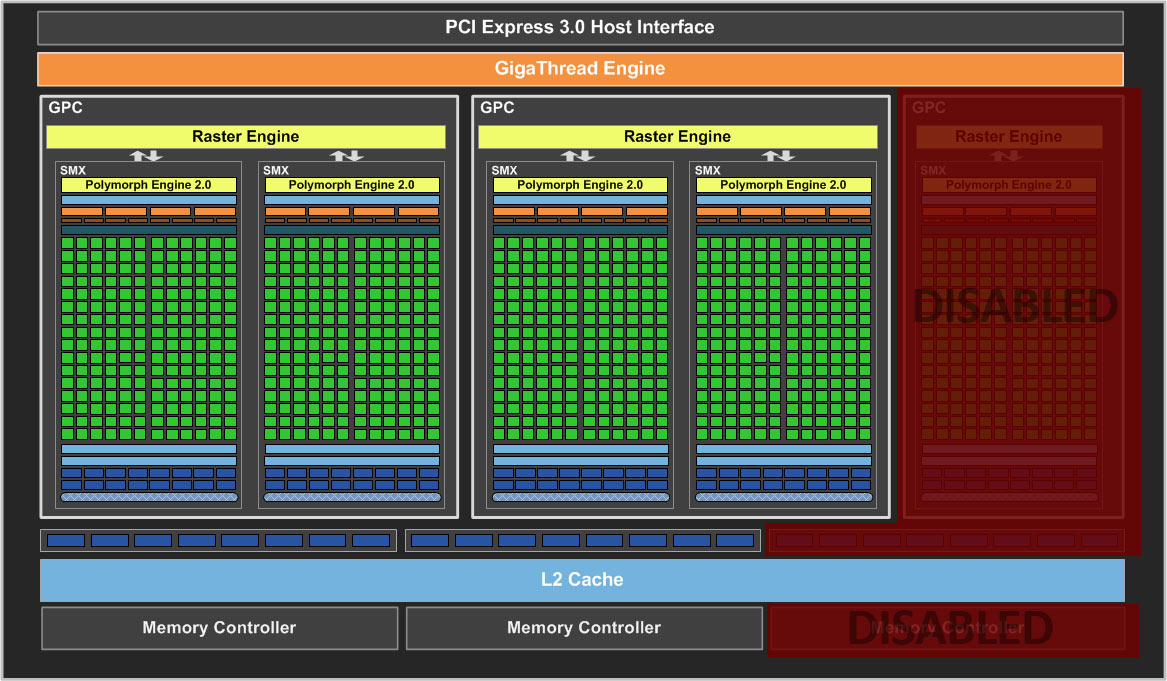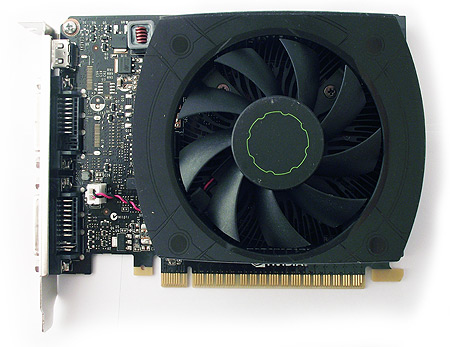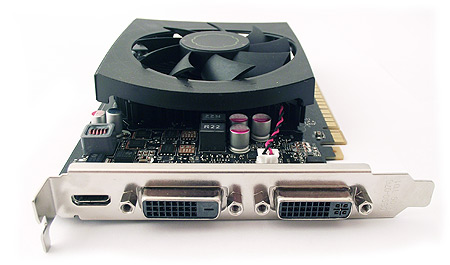GeForce GTX 650 Ti Review: Nvidia's Last Graphics Card For 2012
Nvidia's new GeForce GTX 650 Ti is designed to fill the gap between its GeForce GTX 650 and 660. Is the GK106-based board fast enough to outmaneuver classics like the GeForce GTX 460 and Radeon HD 6850? Or, should you be looking to a 1 GB Radeon HD 7850?
GeForce GTX 650 Ti: The Last Kepler-Based Card For 2012
We've seen Nvidia launch three graphics cards in the last two months, all based on its Kepler architecture. Today, we bring you the fourth, and the last desktop-oriented introduction, Nvidia says, for 2012. Say hello to the GeForce GTX 650 Ti.
There's a fairly substantial price gap between the new $120 GeForce GTX 650 and $230 GeForce GTX 660, so this board's arrival is really not a surprise. After all, Nvidia needs something to do battle with AMD's Radeon HD 7770 and 7850, along with replacing its own GeForce GTX 560. The Radeon HD 6850 and 6870 are still floating around, too, and those cards remain attractive options in the same price range. The GeForce GTX 650 faces a formidable battle if it wants to prove its worth at $150.
Nvidia arms its new value-oriented contender with the same GK106 GPU we saw in Nvidia GeForce GTX 650 And 660 Review: Kepler At $110 And $230. Only, this time around, parts of the chip are disabled in order to create a performance profile that fits between the GeForce GTX 650 and 660.
GK106's third (and curiously asymmetric) GPC is disabled, as is one of the chip's ROP partitions and one of its 64-bit memory interfaces. The resulting configuration yields four streaming multiprocessors totaling 768 CUDA cores and 64 texture units. The remaining two ROP clusters can output 16 full-color raster operations per clock, and the aggregate memory interface is 128-bits wide.
| Header Cell - Column 0 | GeForce GTX 650 | GeForce GTX 650 Ti | GeForce GTX 660 | GeForce GTX 560 | GeForce GTX 460 |
|---|---|---|---|---|---|
| Shader Cores | 384 | 768 | 960 | 336 | 336 |
| Texture Units | 32 | 64 | 80 | 56 | 56 |
| Color ROPs | 16 | 16 | 24 | 32 | 32 |
| Fabrication process | 28 nm | 28 nm | 28 nm | 40 nm | 40 nm |
| Core/Boost Clock | 1058 MHz | 925 MHz | 980/1033 MHz | 810 MHz | 675 MHz |
| Memory Clock | 1250 MHz GDDR5 | 1350 MHz GDDR5 | 1502 MHz GDDR5 | 1002 MHz GDDR5 | 900 MHz GDDR5 |
| Memory Bus | 128-bit | 128-bit | 192-bit | 256-bit | 256-bit |
| Memory Bandwidth | 80 GB/s | 86.4 GB/s | 144.2 GB/s | 128.2 GB/s | 115.2 GB/s |
| Graphics RAM | 1 or 2 GB GDDR5 | 1 or 2 GB GDDR5 | 2 GB GDDR5 | 2 GB GDDR5 | 1 GB GDDR5 |
| Power Connectors | 1 x 6-pin | 1 x 6-pin | 1 x 6-pin | 2 x 6-pin | 2 x 6-pin |
| Maximum TDP | 64 W | 110 W | 140 W | 160 W | 160 W |
| Price | $117 - $150 (Newegg) | ~$150 (MSRP) | $230 - $250 (Newegg) | $167 - $200 (Newegg) | End Of Life |
Most of the GeForce GTX 650 Ti's specifications end up somewhere between the recently-introduced GeForce GTX 650 and GTX 660, except for the memory subsystem. A similar 128-bit interface and 16 raster ops per clock are virtually identical to the GeForce GTX 650. A small bump in data rate accounts for the tiny bandwidth increase from 80 GB/s to 86.4 GB/s. Unfortunately, that's a long way off from last generation's GeForce GTX 460 with the 256-bit bus. Even AMD's older Radeon HD 6850 and 6870 cards offer 128 and 134 GB/s of throughput.
If Nvidia's new budget-oriented board has one weakness for folks looking to game at higher resolutions with anti-aliasing applied, based on what we know about the GeForce GTX 650 and 660, memory bandwidth is going to be it. This is an area where overclocking stands to really help the reference configuration's performance.
Nvidia's GeForce GTX 650 Ti
Get Tom's Hardware's best news and in-depth reviews, straight to your inbox.
The GeForce GTX 650 Ti's diminutive 5.75" x 4" PCB reminds us of the low-end GeForce GT 430. It's a surprisingly fast card, however, despite its compact dimensions.
Nvidia's reference design is equipped with 1 GB of GDDR5 memory. The back side of the PCB is bare, though you'll find memory modules there on more expensive 2 GB versions of the card. By default, memory operates at 1350 MHz, yielding an effective 5400 MT/s data rate. The GK106 GPU itself runs at 925 MHz, and there is no GPU Boost functionality available, similar to what we already saw from the GeForce GTX 660.
The sample we received only has one mini-HDMI and two dual-link DVI outputs, though we know the Kepler-based GPUs we've reviewed so far actually support up to four screens at a time. Add-in board vendors have the option to expose additional display connectivity if they choose, and we'll be checking out a couple of partner boards on the following pages.
A 110 W TDP requires a single six-pin auxiliary power connector, since a PCI Express x16 slot is only able to supply 75 W.
There is no SLI connector on the GeForce GTX 650 Ti. Although some lower-end boards support multi-card configurations over the PCI Express, Nvidia deliberately handicaps this model by preventing cost-conscious gamers from buying one card today and adding a second one down the road. AMD, in comparison, allows for CrossFire operation on its Radeon HD 7770 and 7750 boards.
The reference cooling solution employs one 75 mm axial fan, and, according to our measurements, it does a satisfactory job of keeping Nvidia's 28 nm cool without generating much noise.
Current page: GeForce GTX 650 Ti: The Last Kepler-Based Card For 2012
Next Page Zotac GeForce GTX 650 Ti AMP! EditionDon Woligroski was a former senior hardware editor for Tom's Hardware. He has covered a wide range of PC hardware topics, including CPUs, GPUs, system building, and emerging technologies.
-
yialanliu Awesome, finally something that mainstream budget users can afford from Nvidia, been waiting for ages!Reply -
jimbaladin 40% slower than the 7850 while costing 10-20% less, and 10% faster than the 7770 while costing 25% more.Reply
That looks like a fail to me, and don't even get me started on how late this is. -
unionoob Would be awesome if you would include HD 5770 in benchmarks vs this one too, sure its old card but would love to see how powerfull is that one compered to this one.Reply -
Mike-TH Why would you not include the GTX 660 Ti in the tests? After all, the 650 Ti and 660 Ti should be the options of the day for upgrades - why not compare them?Reply -
outlw6669 nVidia, you really need to stop gimping your bandwidth!Reply
Seriously, such a waste of silicon that could perform quite a bit better if you just gave it a little more breathing room.... -
tomfreak I assume the place where it cripple the 650TI is the 16ROP as well as the 128bit bus. But the 16ROP is probably the biggest bottleneck of the card, this is the only place where u cant be fix by any OCing at all.Reply
With 128bit bus, they could have just leave the memory speed @ 6GHz. 5400 is pretty much ruin the thing.
Edit: btw, this is probably one of the most useful review I see for a while. 6870/6850/560/460/7770 are all there, with benchmark of AA on and off. thumbs up for u author! -
Wisecracker jimbaladin40% slower than the 7850 while costing 10-20% less, and 10% faster than the 7770 while costing 25% more.That looks like a fail to me, and don't even get me started on how late this is.Reply
The HD7850 and GTX 650ti are essentially the same price on New Egg.
-
proffet another PhysX card I suppose..Reply
slightly too weak for a dedicated in my book.
I said my book as in my opinion. -
Iastfan112 Mike-THWhy would you not include the GTX 660 Ti in the tests? After all, the 650 Ti and 660 Ti should be the options of the day for upgrades - why not compare them?Reply
Because comparing cards in the ~150 dollar range to a card thats +280 dollars is asinine?
-
cknobman AnandTech has already released an article covering AMD officially dropping the price of the 1GB 7850 to $169 for the fall seasonReply
This means we will easily see $150 or less after rebates and officially makes this Nvidia 650ti product a total fail. I see no reason to purchase this.





